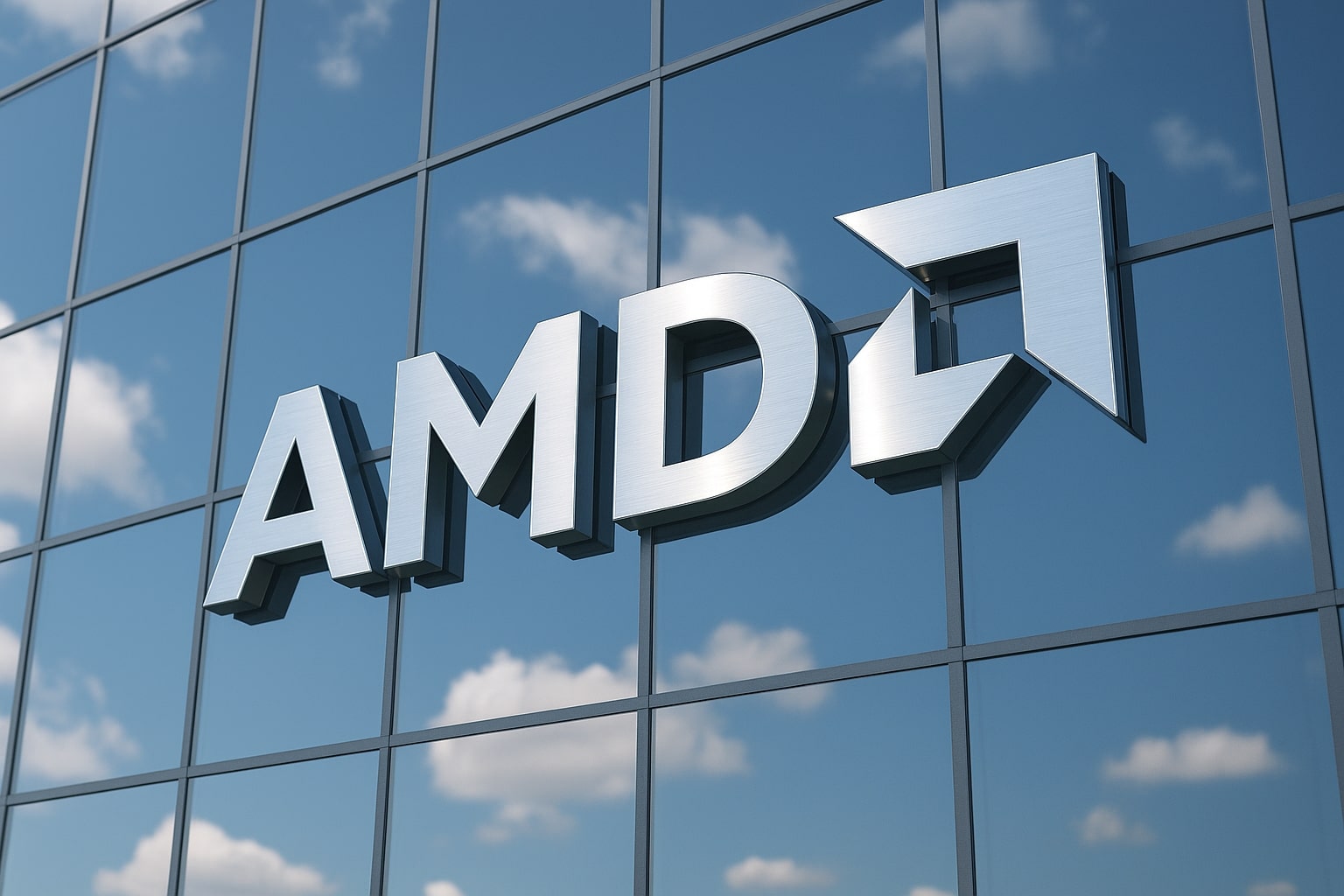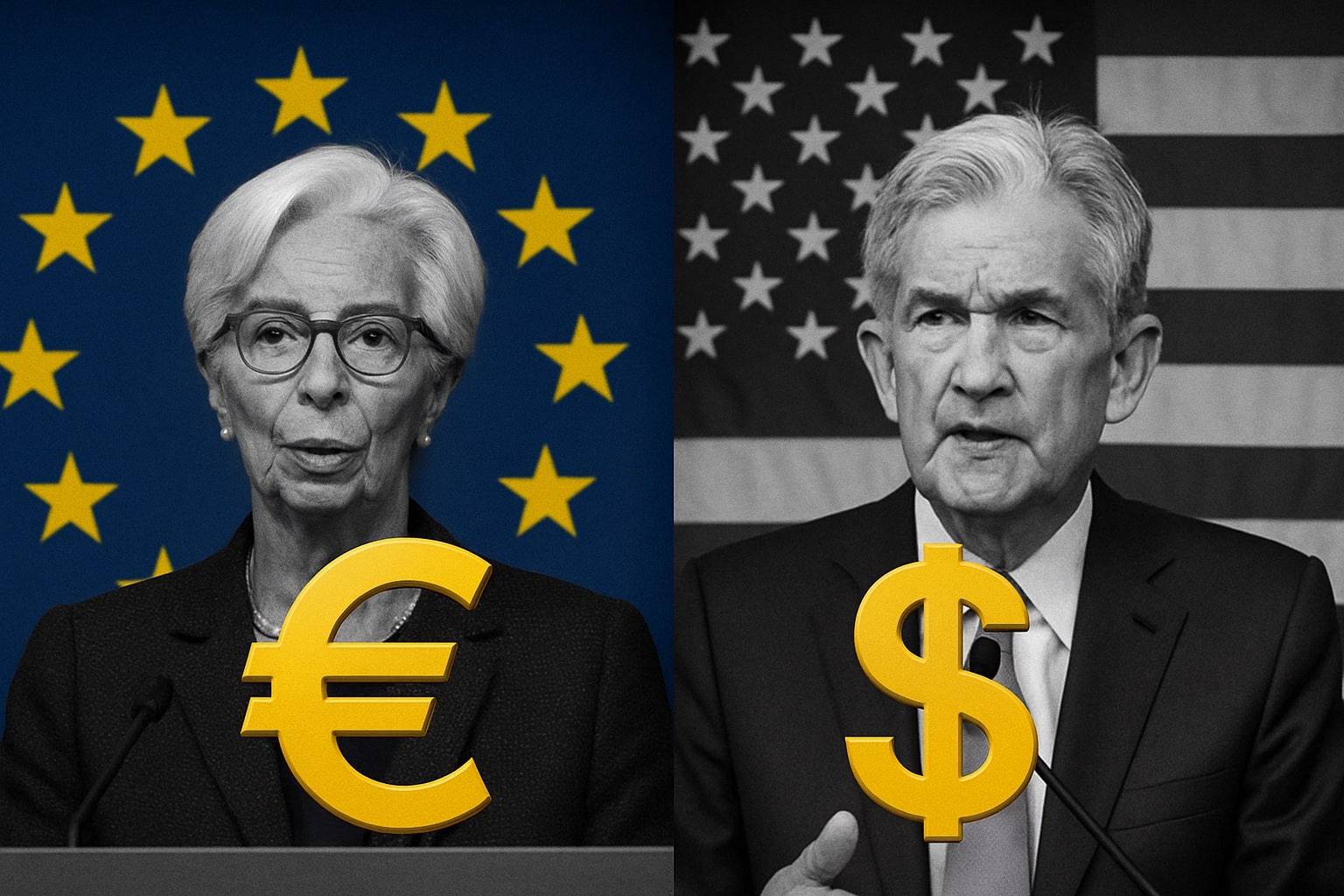
Stock Market Today - Wall Street Rises as Dow Jones (^DJI) Climbs to 47,730, S&P 500 (^GSPC) at 6,842, and Nasdaq (^IXIC) Rebounds After CME Outage
S&P 500 (^GSPC) climbs 0.43% to 6,842 as CME restores trading; Gold (GC=F) nears $4,160, Silver (SI=F) hits record $55.89, and Oil (CL=F) steadies at $59.56. Investors rotate from megacap tech to small caps as rate-cut bets strengthen. | That's TradingNEWS
Stock Market Today - Wall Street Ends November Higher As Indices Rebound From CME Outage
U.S. equities closed the final session of November with steady gains despite a chaotic start caused by a trading halt at the Chicago Mercantile Exchange. The Dow Jones Industrial Average (^DJI) advanced 0.64% to 47,730, the S&P 500 (^GSPC) rose 0.43% to 6,842, and the Nasdaq Composite (^IXIC) added 0.41% to 23,310. The Russell 2000 (RUT) outperformed large caps, gaining 0.49% to 2,498, achieving its seventh consecutive monthly increase—its longest winning streak since mid-2021. The Dow erased earlier monthly losses and secured a seven-month streak of gains, while the Nasdaq broke its seven-month run, falling nearly 2% for November as profit-taking hit the AI sector. The S&P 500 slipped 0.1% on the month, ending a six-month advance.
CME Disruption Freezes Global Futures Before Quick Recovery
A data-center cooling failure at CME Group’s CyrusOne facility temporarily halted futures and options trading worldwide. Contracts for S&P 500 (ES=F), Dow Jones (YM=F), Nasdaq-100 (NQ=F), U.S. Treasuries, and WTI crude (CL=F) were all suspended for several hours before resuming around 8:30 a.m. ET. After restoration, E-Mini S&P 500 futures gained 0.36% to $6,852.50, Dow futures rose 0.60% to $47,777, and Nasdaq-100 futures climbed 0.40% to $25,404. The brief outage exposed how dependent global liquidity is on a single technological hub. While price damage was limited, volatility briefly spiked across commodities and FX markets, highlighting structural fragility beneath record-level indices.
Fed Rate-Cut Bets Push Market Sentiment Higher
Traders increased bets that the Federal Reserve will trim interest rates at its December meeting, assigning an 80% probability to a 25-basis-point cut. The expectation of cheaper funding reignited appetite for growth assets and provided a tailwind to the broader market. Yet conviction remains uneven: megacap tech continues to trade with fatigue, suggesting investor skepticism over stretched AI-driven valuations. The Nasdaq’s 2% monthly loss underscores that enthusiasm for artificial-intelligence exposure has cooled amid concerns over earnings sustainability and high multiples.
Corporate Earnings Show Strength But Limited Reward
S&P 500 earnings grew 13.4% year-over-year in Q3, marking one of the strongest seasons in recent years. However, investor response has been muted. Companies beating estimates saw average four-day gains of 0.4%, below the five-year average of 0.9%, while firms missing expectations suffered an average 5% decline—nearly double the historical drop. The asymmetric reaction highlights fatigue after multiple quarters of outperformance and reinforces the higher bar facing large tech names such as NVIDIA (NASDAQ:NVDA), which faced post-earnings volatility despite robust results.
Sector Rotation Favors Value, Small Caps, And Airlines
A clear rotation out of megacaps and into value, cyclicals, and transport stocks defined late-month flows. The Russell 2000’s strength contrasted with subdued large-cap performance, signaling renewed institutional interest in undervalued domestic names. Airline shares outperformed as travel demand surged over the Thanksgiving period and fuel costs fell sharply. American Airlines (AAL) rose 0.7%, Delta Air Lines (DAL) gained 0.5%, Alaska Air (ALK) advanced 0.4%, while United (UAL) and JetBlue (JBLU) each added 0.3%. Jet-fuel prices declined 14% week-over-week and 7% month-to-date, improving carrier margins.
Commodity Markets Recover After CME Freeze
Energy and metals trading resumed smoothly after the outage. Brent crude (BZ=F) rebounded 1.20% to $63.29 per barrel, though still headed for a fourth consecutive monthly loss, its longest downturn since 2023. West Texas Intermediate (CL=F) hovered near $59.56, while Wall Street forecasts remain bearish for 2026—JPMorgan projects Brent at $58 and WTI at $54, citing a looming global supply glut. Gold (GC=F) rallied toward $4,160 per ounce, its fourth straight monthly gain, driven by lower-rate expectations and risk-off hedging. Silver (SI=F) hit an all-time intraday record at $55.89, up 5% on the day and nearly 90% year-to-date, outperforming gold’s 60% annual rise.
Fund Flows Indicate Position Trimming Ahead Of December
U.S. equity funds recorded their first weekly outflow since mid-October, losing $4.56 billion as investors booked profits after the recent rally. Large-cap funds shed $144 million, mid-caps $1.69 billion, and small-caps $885 million. The pullback signals temporary caution rather than panic—allocations to bonds and gold increased simultaneously, showing a rotation into defensive and yield-bearing instruments rather than an exit from risk altogether.
UK And European Markets Stabilize After Budget Reaction
The FTSE 100 advanced modestly after resolving its own turbulence from the UK budget. British equities have now logged five consecutive monthly gains, their longest winning stretch since 2021. The pound traded flat while gilts remained steady across maturities, reflecting balanced sentiment. Investors continue dissecting fiscal reforms on pensions, ISAs, and venture-capital incentives. Despite government claims of cost-of-living relief, surveys show British households remain skeptical about the budget’s benefits.
2026 Forecasts Emerge: Deutsche Bank Sees S&P 500 At 8,000
Major Wall Street institutions have begun issuing projections for 2026. Deutsche Bank set the most aggressive target, predicting the S&P 500 could reach 8,000, citing mid-teens total returns fueled by buybacks and earnings momentum. HSBC and JPMorgan estimate a base case near 7,500, with upside contingent on continued rate cuts. These expectations imply earnings expansion above 10% per annum through 2026 and elevated equity valuations relative to historic norms.
Labor Market And Retail Sentiment Remain Soft
Seasonal hiring remains weak as corporations tighten budgets. The National Retail Federation projects 265,000–365,000 holiday hires, the lowest in over fifteen years, compared to 442,000 in 2024. UPS announced plans to cut 48,000 jobs, signaling pressure across logistics and retail. Despite this, consumer spending remains solid, and the SPDR S&P Retail ETF (XRT) edged 0.1% higher to $84.43, capping its best week in six months.
Read More
-
AMD Stock Price Forecast - AMD Shares Gains on $9.2B Q3 Surge
27.11.2025 · TradingNEWS ArchiveStocks
-
Bitcoin Price Forecast - BTC-USD Holds Above $91,000 as Global Liquidity Expands and Fed Cut Bets Ignite $100K Outlook
28.11.2025 · TradingNEWS ArchiveCrypto
-
Gold Price Forecast - XAU/USD Surges Above $4,190 as CME Outage Ends
28.11.2025 · TradingNEWS ArchiveCommodities
-
Stock Market Today - Dow 47,427 and Nasdaq 23,214 — Fed Cut Bets Power DELL, HOOD, and URBN in Holiday Rally
27.11.2025 · TradingNEWS ArchiveMarkets
-
EUR/USD Price Forecast - (EURUSD=X) Drops Toward 1.1550 as Fed Cut Odds Soar and Eurozone Data Disappoints
28.11.2025 · TradingNEWS ArchiveForex
Healthcare And Materials Diverge Sharply Within The S&P 500
Sector performance split decisively on Friday, with healthcare and materials moving in opposite directions. The Health Care Select Sector SPDR ETF (XLV) dropped 0.66% to $157.38, extending its weekly decline to 1.8% as profit-taking hit high-multiple drugmakers. The sector’s pressure was led by Eli Lilly (NYSE:LLY), which fell 2.66% to $1,075.00, wiping nearly $30 billion in market capitalization over the past two sessions. The drop followed continued unwinding in biotech momentum names, with volume in LLY shares climbing 45% above its 30-day average, signaling aggressive short-term rotation out of defensive healthcare.
In contrast, the Materials Select Sector SPDR (XLB) advanced 0.74% to $89.55, bringing its weekly gain to 2.3%, underpinned by strong flows into industrial metals and infrastructure-related equities. Steel, copper, and chemical producers rallied as demand indicators from construction and heavy equipment improved. The materials sector now outperforms healthcare by 3.1 percentage points over the past month, marking one of the strongest rotations into cyclicals since Q2 2024. This divergence underscores investors’ preference for hard-asset exposure over defensive earnings in anticipation of lower interest rates and expanding fiscal infrastructure projects.
Technical And Sentiment Overview
After five consecutive positive sessions, the S&P 500 (^GSPC) exhibits an overbought RSI reading near 71.4, while the Nasdaq Composite (^IXIC) sits at 69.8, just below extreme conditions. Breadth has tightened — only 57% of S&P 500 constituents closed above their 20-day moving average compared with 72% a week earlier. Short-term momentum remains positive, but upside potential is capped unless market participation broadens. The CME outage, which froze futures trading for nearly three hours, momentarily elevated the CBOE Volatility Index (VIX) to 15.1, before retracing to 13.7. Hedge funds increased allocations to gold (GC=F) and silver (SI=F) futures during the disruption, adding roughly $1.4 billion in protective exposure across metals according to CME data.
Sentiment remains cautious but constructive. Institutional desks now attribute near-term performance to Fed policy clarity and AI earnings revisions, with macro data taking a secondary role. Options skew on the S&P 500 has shifted toward protective puts for December expiry, implying hedging ahead of the Fed’s rate decision.
TradingNews.com Market Verdict
The final session of November closed with clear sector bifurcation and concentrated leadership. Value-oriented names and small-cap cyclicals continue to outperform, while AI megacaps face valuation pressure and fading momentum. Commodities, metals, and materials-linked equities regained investor favor, reflecting conviction in a 2026 rate-easing cycle and renewed global infrastructure demand.
Verdict:
BUY — Materials (XLB), Industrials, and Small-Caps (RUT)
HOLD — Broad Market Indices (^GSPC, ^DJI)
SELL — Overextended AI Megacaps (NVDA, GOOG, MSFT)
The current configuration points to cyclical recovery with tactical hedging. Metals and value sectors retain upside potential as traders position for the Fed’s anticipated 25 bps cut in December, while stretched tech valuations invite continued rotation into hard-asset growth and income-producing equities.



















